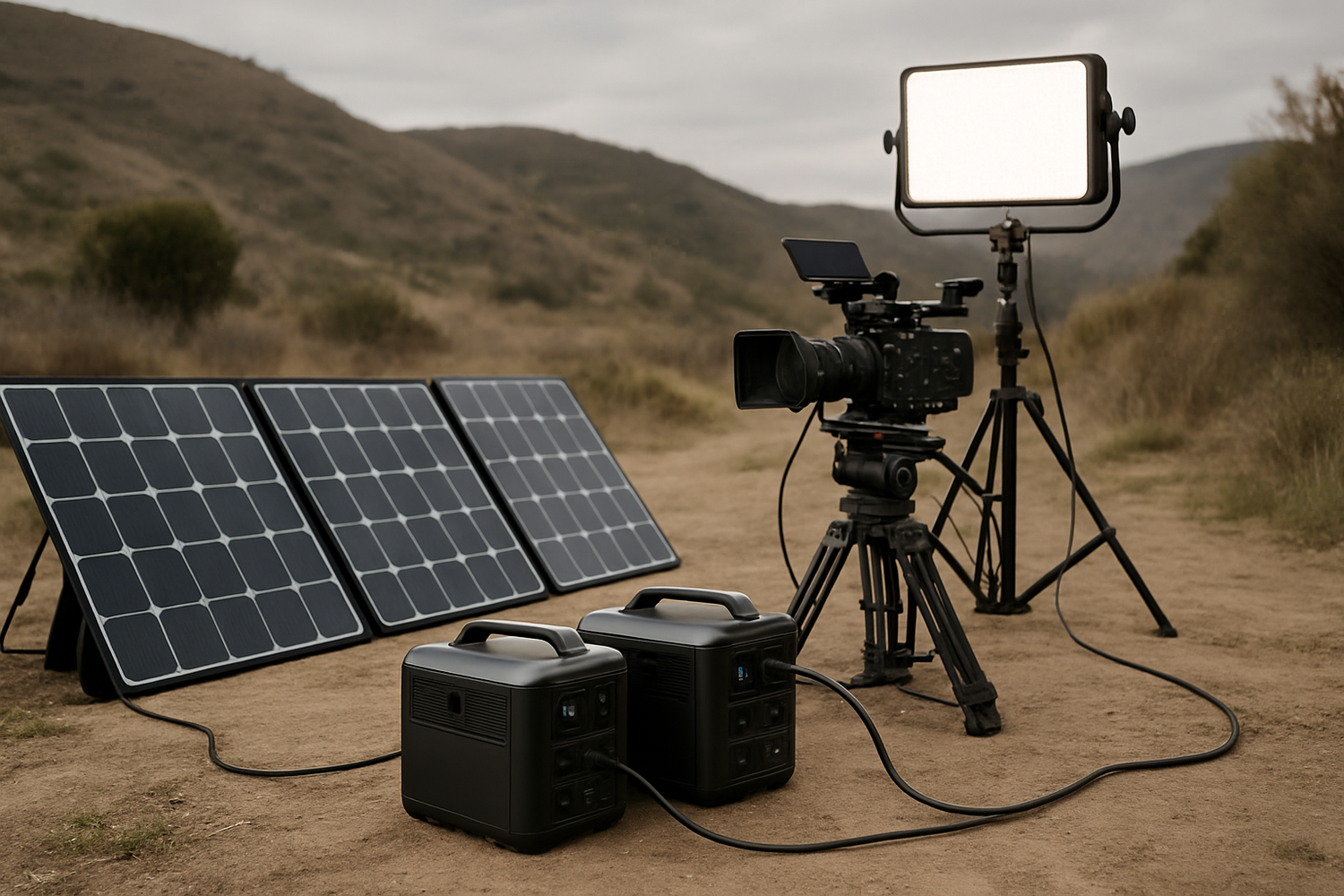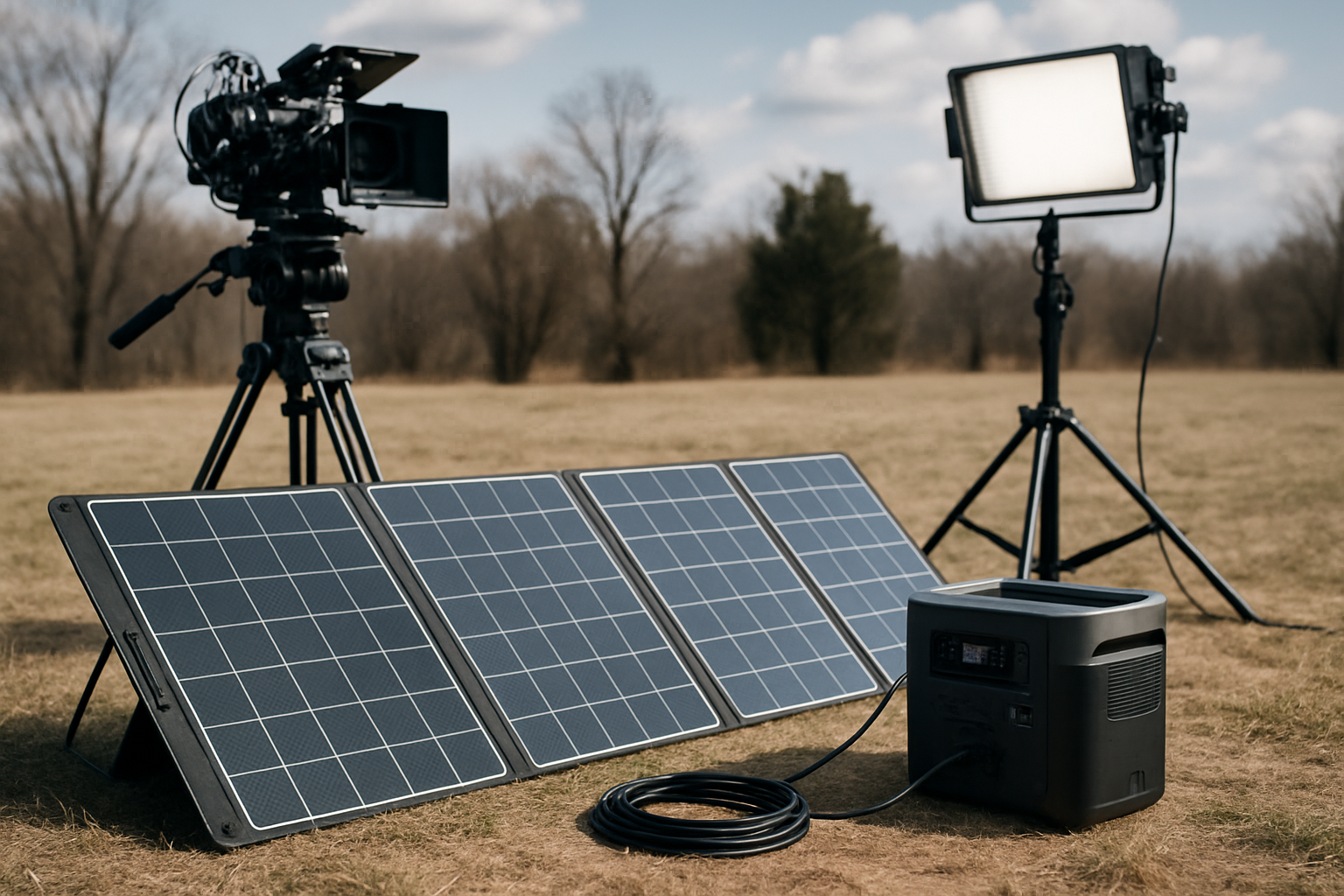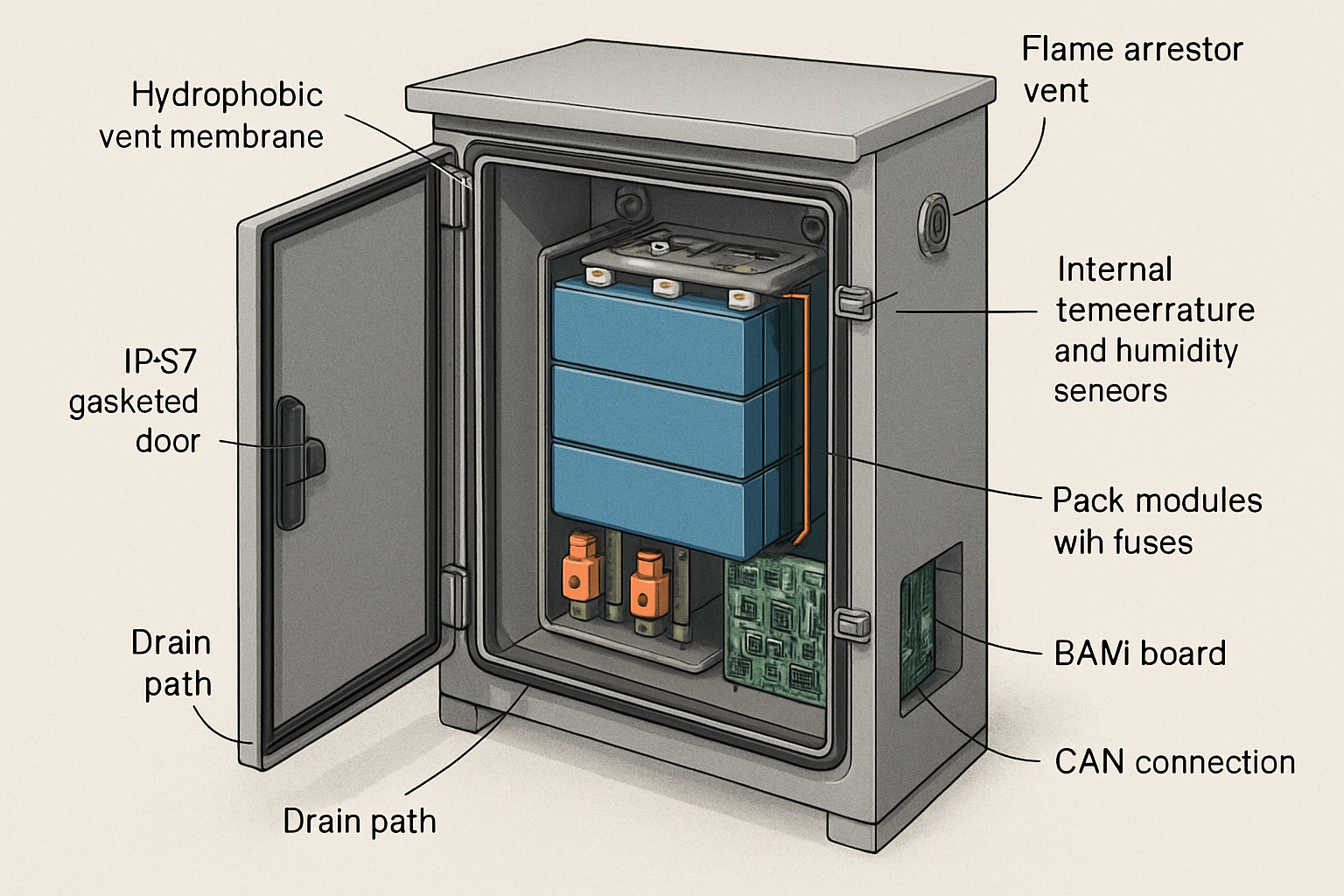Filmmaking and photography thrive on capturing fleeting moments. On fast turnaround days, every second counts, and the reliability of your power supply becomes paramount. A sudden power loss can halt production, disrupt creative flow, and incur significant costs. Crafting a robust power strategy ensures your equipment performs flawlessly, allowing you to focus on bringing your creative vision to life.
The Evolution of On-Set Power Solutions
For many years, film and photography sets relied on traditional generators. While powerful, these units often brought with them considerable noise, exhaust fumes, and logistical complexities, particularly in remote or sound-sensitive environments. Their constant hum could interfere with audio recording, demanding costly post-production work to fix.
The landscape of on-set power has shifted dramatically. Today, the focus is on portable, silent, and clean energy solutions. Modern productions are embracing advanced energy storage systems, much like the broader energy sector is transitioning towards cleaner, more integrated grids. For instance, the International Energy Agency (IEA) highlighted that installing battery storage systems with distributed solar PV can significantly increase self-consumption and reduce reliance on external grids by shifting energy usage. This principle directly applies to on-set power, where self-contained battery energy storage systems (ESS) offer independence and efficiency.
The decreasing costs and increasing versatility of photovoltaic (PV) equipment also make portable solar power a viable and attractive option for charging on location. This move towards sustainable and quiet power not only benefits the environment by reducing emissions but also enhances the working environment on set, eliminating generator noise and improving air quality.

12 Essential Power Checklist Items for Rapid Production
A successful fast turnaround day hinges on meticulous power planning. Here are 12 critical items to include in your on-set power checklist:
-
Assess Total Power Needs
Begin by calculating the cumulative wattage of all equipment: cameras, monitors, lighting, audio gear, laptops, and charging hubs. Overestimating is safer than underestimating. For example, a professional softbox lighting kit might consume around 500W at average settings, while a shoulder-mount camera uses about 45W per hour. Understanding these figures helps you size your power solutions accurately.
-
Choose Reliable Power Stations
Invest in high-capacity portable power stations. These units, often featuring advanced lithium iron phosphate (LiFePO4) batteries, provide clean, stable power essential for sensitive digital equipment. They offer multiple output types (AC, USB-C, DC) to accommodate diverse gear.
-
Pack Sufficient Battery Energy Storage Systems (ESS)
For extended shoots or higher power demands, bring dedicated ESS units. These integrated systems offer substantial energy reserves, ensuring continuous operation for all your equipment. Consider modular solutions that can be scaled up or down based on the production's needs.
-
Verify Inverter Compatibility
Ensure your power stations and ESS units feature pure sine wave inverters. This technology produces electricity that matches or exceeds grid quality, preventing interference and potential damage to sensitive audio and video equipment. Modified sine wave inverters can introduce noise into recordings.
-
Bring Rapid Charging Solutions
Fast turnaround days demand quick recharges. Include powerful chargers for all battery types, and consider portable solar panels that can recharge your power stations directly from the sun, offering energy independence, especially in remote locations.
-
Organize Cables and Distribution
Proper cable management is crucial for safety and efficiency. Use heavy-duty, clearly labeled cables and power distribution units. Avoid long cable runs that can lead to voltage drops or tripping hazards.
-
Plan for Silent Operation
If audio recording is involved, silent power sources are non-negotiable. Modern battery power stations and hybrid systems operate with minimal noise, often less than 30 decibels from inverter cooling fans, significantly quieter than traditional generators.
-
Consider Off-Grid Solar Capabilities
For outdoor or remote shoots, off-grid solar solutions provide a sustainable and reliable power source. Portable solar panels can constantly replenish battery banks, reducing reliance on fuel and traditional grid connections.
-
Implement Power Monitoring
Use power monitoring tools or built-in displays on your ESS to track energy consumption and remaining battery life in real-time. This allows for proactive power management, preventing unexpected outages.
-
Have Backup Power Contingency
Always have a backup plan. This could mean extra fully charged LiFePO4 battery packs, a smaller secondary power station, or a hybrid system with an efficient generator for emergencies.
-
Secure Power for Auxiliary Equipment
Do not forget power for essential auxiliary items like walkie-talkies, mobile phones, tablets, and even fans or heaters if conditions require. Dedicated charging stations with multiple USB ports are valuable.
-
Conduct a Pre-Shoot Power Test
Before the actual shoot day, conduct a full power test with all equipment running simultaneously. This identifies potential bottlenecks or insufficient capacity, allowing for adjustments beforehand. This practice minimizes surprises when production begins.
Optimizing Power Management for Seamless Shoots
Effective power management extends beyond merely having the right equipment; it involves strategic planning and real-time adaptation. During pre-production, engage with your crew to map out power requirements for each scene and location. This includes identifying peak power demands and quiet operation zones. For instance, modern hybrid power systems often provide real-time data on power storage and fuel levels, alongside remote management capabilities, offering enhanced control and efficiency.
Integrated energy systems, combining battery storage with solar or efficient backup generators, represent a significant leap forward. These systems automatically switch between power sources to meet fluctuating energy demands, ensuring stable output for sensitive gear. This intelligent power distribution reduces fuel consumption and operational costs, a crucial benefit for any production.
Sustainable Energy for Cinematic and Photographic Excellence
The push for sustainability is reshaping industries, and filmmaking is no exception. Adopting cleaner energy solutions on set not only aligns with environmental responsibility but also offers tangible operational advantages. Solar power systems, for example, generate near-silent operation, eliminating the need for extensive sound blankets or post-production audio fixes often required with noisy generators.
While an initial investment, a basic setup including portable solar panels, lithium batteries, and a quality inverter can provide long-term savings through reduced fuel costs and improved on-set efficiency. These off-grid solar solutions empower filmmakers to shoot in remote, visually stunning locations without compromising on power reliability.
Here is a comparison of common on-set power solutions:
| Power Solution Type | Advantages | Disadvantages | Best Use Case |
|---|---|---|---|
| Traditional Generators | High power output | Noise, emissions, fuel logistics, unstable power for sensitive electronics | High power demands (less ideal for modern sets) |
| Portable Power Stations (Battery ESS) | Silent, clean, portable, stable pure sine wave power, multiple outlets | Capacity limitations for extremely high-draw equipment | Cameras, lights, monitors, laptops, sound equipment, small to medium productions |
| Hybrid Power Systems | Combines generator power with silent battery operation, reduced emissions, fuel efficiency, remote monitoring | More complex setup than standalone battery units | Larger productions, locations with mixed power needs, extended shoots |
| Off-Grid Solar Solutions | Renewable, silent, emission-free, energy independence | Dependent on sunlight, initial setup time for larger arrays | Remote locations, long-term shoots, eco-conscious productions |
Ensuring Uninterrupted Creativity
Power is the lifeline of any film or photography production, especially when working against tight schedules. By meticulously planning your on-set power strategy and embracing advanced energy solutions, you empower your team to achieve creative excellence without interruption. The move towards reliable, scalable, and sustainable energy solutions not only optimizes efficiency but also contributes to a cleaner production future.
References
- International Energy Agency. (2016). Next Generation Wind and Solar Power (Full Report).
- International Energy Agency. (2017). Getting Wind and Solar onto the Grid.





Leave a comment
All comments are moderated before being published.
This site is protected by hCaptcha and the hCaptcha Privacy Policy and Terms of Service apply.